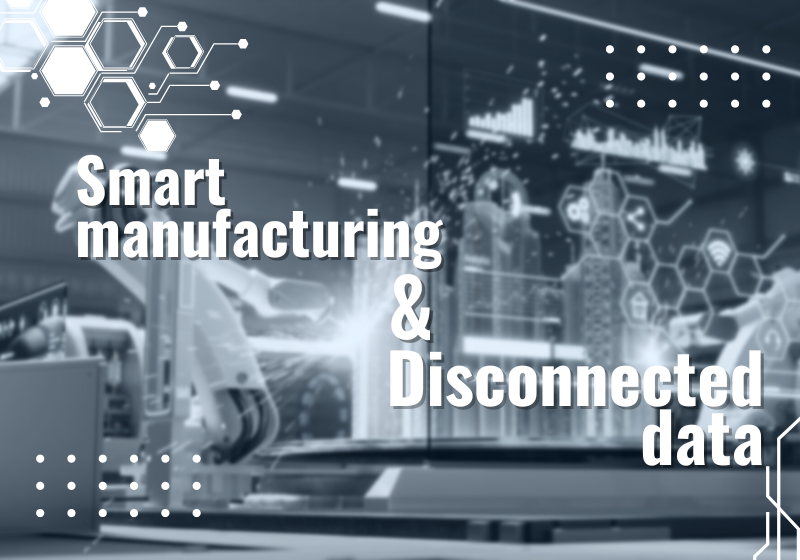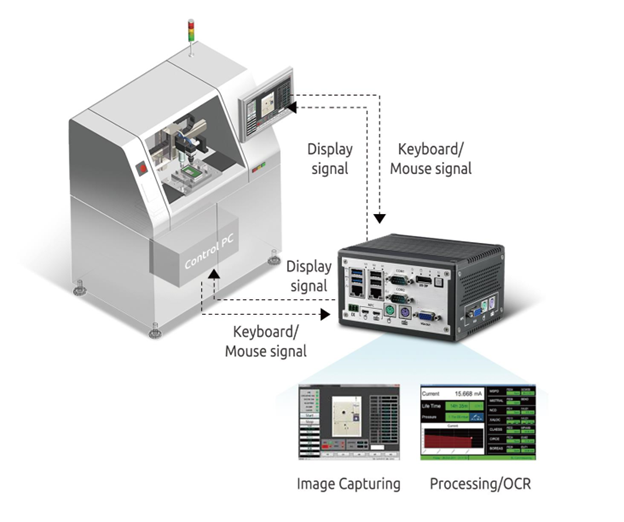

Industry 4.0 and the Industrial Internet of Things (IIoT) are becoming a far more significant proposition for firms looking to improve the integration and automation of their operations. However, there may be a gap between grand ideas and their implementation – which new industry collaboration is looking to remove. Despite the importance they place on data, many organizations are plainly holding down performance by depending on disconnected data in scattered systems that can't connect to the cloud," the paper states. To fulfill the needs of companies, consumers, and regulators, staff members spend a significant amount of time unlocking data locked in spreadsheets and old systems. This unconnected data functions as a ball and chain, tying them down and reducing performance.
Industry 4.0 is transforming the way that manufacturers function, but the difficulty they confront is how to incorporate all this technology and gather all the data into their current systems. The integration of technology onto the factory floor via the Industrial Internet of Things (IIoT) has transformed many facilities into what we now refer to as "smart factories." However, because this data has generally been kept on local computers, manufacturers face trouble scaling and integrating it with other activities. Due to their inability to expand the data to their full potential, manufacturers who rely on local storage for IIoT data only reap the advantages of these insightful learnings in part.
What is Smart Manufacturing?
The intensified collaboration of machines, products, and people throughout the production and the supply chain is referred to as smart manufacturing. Innovation in processes, goods, and business models is facilitated by this. Emerging technologies including cloud computing, mobile computing, the Internet of Things, data analytics, and automation are the foundation of the smart factory. Many businesses experience difficulties putting appropriate software into place.

What is Disconnected Data?
The disconnected environment allows data retrieved from the data source to be manipulated and later reconciled with the data source. The disconnected classes provide a common way to work with disconnected data regardless of the underlying data source. They include the DataSet, DataTable, DataColumn, DataRow, Constraint, DataRelationship, and DataView classes.
According to research from a digitalization expert company, "disconnected data" is holding back close to three-quarters of manufacturing and engineering organizations. Nevertheless, the report finds that 73 percent of industrial organizations still use antiquated software and spreadsheets with "disconnected" data to complete operations.
Monitoring Performance and Real-time Data Collection
The effectiveness of the whole manufacturing process is optimized via data-driven decision-making. Realizing a smart factory may be difficult, especially when it comes to connecting outdated technology and streamlining system integration for more flexibility. Considering this, SmartMore Inside offers a way to combine OT (equipment) and IT (management) technologies, resulting in a comprehensive data collection solution with highly accurate, non-intrusive operation, and quick processing of extracted machine data, providing complete operating status information in real-time. Our industrial computer Series is powered by the SmartMore platform, which enables full-process data interchange between devices and integrates network connection, data transmission, and control in already installed equipment and systems via software integration.
OCR technology based on deep neural networks computing is integrated into SmartMore Inside IoT, offering a distinctive data extraction solution with high identification rates through non-intrusive operations. To further improve production line smart operation management, SmartMore solutions employ an innovative simplified script configuration tool that makes it simple to create operational interfaces.

SmartMore Connecting the Disconnected:
Architecture for Non-intrusive System Computing
Long-run supply chain management and workflows with Industry 4.0
The COVID-19 pandemic highlighted weaknesses in the industrial sector through its volatility and disruption. Those manufacturers who had incorporated Industrial Internet of Things technology into their operations before the start of the pandemic were less impacted by these broad interruptions. The necessity to 'reshore' industry by boosting local supply networks was exposed while borders closed, and nations fell into lockdown. By doing this, local capabilities are improved, and the industry is safeguarded from potential upheavals.

Rethinking supply chain management
Future-oriented producers are decentralizing their operations, establishing a network of secondary suppliers, boosting local inventory, and trying to continually enhance their supply chains. Businesses are reassessing their present systems and their capacity for rapid development. The most effective supply chains are practical, digital, and most importantly, adaptable.
Flexible manufacturing is encouraged by the introduction of Industry 4.0 along the supply chain and in the digitization of processes. Modular and scalable production lines have been considered due to the difficulty of quickly modifying a production line to create additional units, several modifications, or a whole new system. Traceability and real-time visualization are essential for a supply chain that is adaptable enough to respond to changes and production needs. RFID systems, barcode data, and software integration with ERP systems are examples of industry 4.0-enabled technologies that are essential to achieve this objective and are reasonably simple to adopt.

Workflow, as used in the manufacturing industry, is a term that describes the related actions that must be performed in a particular order to finish a task. There are several workflows along the whole manufacturing supply chain, and each step in a workflow has a distinct step before it and a distinct step after it. The processes must be as effective and resilient as feasible to guarantee uninterrupted operations and output to prevent expensive disruptions. Fully automating industrial processes is one potential "futureproof" answer. Fully automated warehouses have been used for many years in some areas, such as the distribution of fast-moving consumer goods (FMCG), where automation has shown to be far more dependable and timelier than traditional human pick-and-pack processes. The process of sending items out the door, securely and precisely, helps both the customer and the supplier by utilizing live data and automated picking devices. Since the same robot may do numerous tasks, this sort of automation has the advantage of flexibility.
Making information more manageable requires a data integration approach
Technologies used in smart factories must be able to gather, distribute, and analyze enormous volumes of data. This is in addition to the fact that an increasing number of enterprises are manufacturing complicated goods that need the collaboration of several factories, frequently under different ownership. Additionally, whether through consumer encounters, manufacturing, or organizational changes, this sector has always generated a lot of data. Consider how much data is used to manage crucial production concerns like inventory control, delivery, WIP monitoring, etc.
The incredible volume of data previously described typically derives from several unrelated sources, like a CRM system, product testing, and sales reports, and ends up being siloed and worthless. Enterprise information frequently does not communicate with control systems, which makes it more difficult for businesses to work together. For improved insights from the data obtained, this is accomplished by integrating key systems through an integrated enterprise resource management (ERP), manufacturing execution system (MES), and product lifecycle management (PLM) platform.

Conclusion
Because each department interprets data differently, relying on siloed data significantly impairs company operations and creates accountability and visibility problems. This is a challenge for companies that are under pressure to change the way they allocate resources and share data insights.
This information can be shared more readily if paper-based processes are digitalized using "tools" for work instruction that connect to networked smart devices and outside systems. This gives staff access to high-quality data and creates a "single source of truth" for the entire organization, allowing for more proactive and quick "real-time" insights to boost productivity and meet compliance requirements.
In order to ensure that the demands for data collecting and data analysis are matched, a corporation must make sure that IT and OT professionals participate in all early discussions.
Email format error
Email cannot be empty
Email already exists
6-20 characters(letters plus numbers only)
The password is inconsistent
Email format error
Email cannot be empty
Email does not exist
6-20 characters(letters plus numbers only)
The password is inconsistent